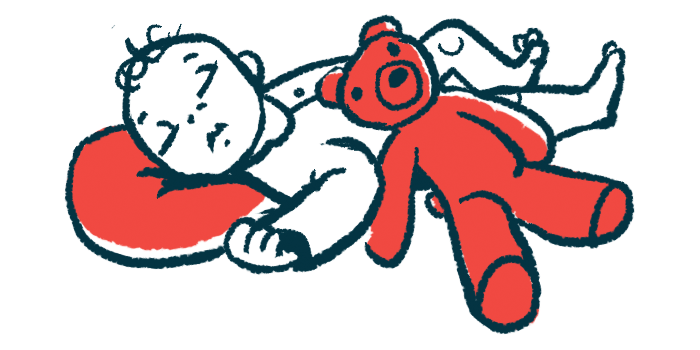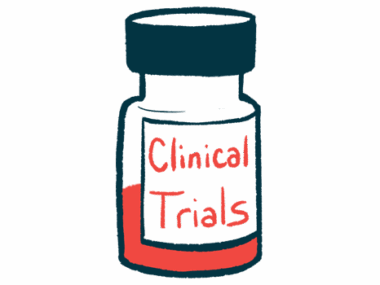Vyjuvek treatment helps infant with DEB achieve motor milestones
Gene therapy proves effective for 9-month-old boy, case study shows
Written by |

Vyjuvek (beremagene geperpavec) successfully healed widespread skin wounds on an infant boy with severe dystrophic epidermolysis bullosa (DEB), according to a case study.
Before treatment with gene therapy, the boy failed to thrive and achieve major motor milestones. After four months of weekly Vyjuvek, however, he developed motor skills and was able to stand and walk.
“The impact of [Vyjuvek] was far beyond wound healing: it improved the general development of the child … and positively influenced the well-being of the entire family,” the researchers wrote.
Case details were described in a letter to the editor, “Beremagene geperpavec (B-VEC) for infantile dystrophic epidermolysis bullosa: Benefit of early intervention,” in the Journal of the European Academy of Dermatology and Venereology.
DEB is caused by mutations in the COL7A1 gene, resulting in a deficiency of type VII collagen — a structural protein essential for maintaining the integrity of skin tissue. Without sufficient type VII collagen, the connection between skin layers weakens, leading to the formation of blisters and scar tissue as the blisters heal.
Vyjuvek development and mechanism
Developed by Krystal Biotech, Vyjuvek (previously known as B-VEC) is a gene therapy gel approved in the U.S. and European Union for the treatment of wounds in children and adults with DEB. Delivered by a modified and harmless herpes simplex virus, the therapy contains healthy copies of COL7A1, which aim to boost type VII collagen production, increase the skin’s structural integrity, reduce blistering, and promote wound healing.
The U.S. Food and Drug Administration recently approved an update to Vyjuvek’s prescribing information, allowing its use in people of all ages and permitting at-home treatment.
The approval was supported by data from the Phase 3 GEM-3 (NCT04491604) study, which enrolled 31 people with DEB, ages 1 to 44. Vyjuvek healed significantly more wounds than a gel with a placebo after six months of treatment (67% vs. 22%).
Despite these positive findings, little is known about its effect on infants.
Here, researchers associated with the University of Freiburg, in Germany, detail the case of an infant boy with severe recessive DEB treated with Vyjuvek, starting at 9 months old in an early access program.
He presented with multiple blisters and wounds on the hands and legs, including the absence of skin (aplasia cutis congenita) on his left leg. He received pain relievers — such as acetaminophen, ibuprofen, and morphine —but failed to thrive and didn’t meet the motor milestones.
Vyjuvek gel was applied weekly to all wounds, and it was well tolerated. The chronic wounds on his left leg healed within six months. Although new blisters appeared nearby and in other untreated regions, they healed within two weeks with Vyjuvek. Moreover, acute wounds healed in less than seven days with almost no scarring and remained closed. Morphine treatment for pain was then stopped.
After four months of Vyjuvek treatment, the boy developed motor skills and was able to stand and walk. By the end of the 40-week observation period, the chronic wounds on his lower extremities had healed, despite his increased physical activity and independent mobility.
He also gained weight and had improved levels of C-reactive protein — a marker for bodywide inflammation — and hemoglobin, the protein in red blood cells that carries oxygen.
While the area of the wounds progressively decreased, transient increases were observed due to new blisters, which are common with DEB, resulting from the disease and external factors such as trauma, heat, and infections, the team noted.
“These real-world observations highlight [Vyjuvek] efficacy in congenital skin defects,” the researchers wrote. “Further case series of paediatric patients of [at least] 6 months of age receiving [Vyjuvek] therapy are warranted to better elucidate its efficacy and safety in this population.”






